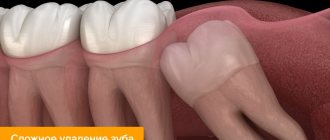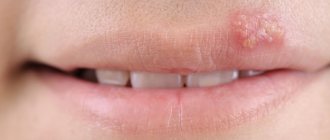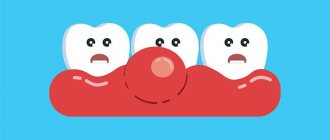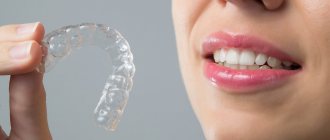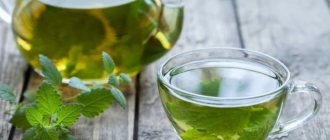Regurgitation is the reflux of a small amount of gastric contents or gastric juice mixed with saliva up the esophagus. Regurgitation often occurs in infants and in the vast majority of cases is a variant of the physiological norm. They do not require therapy except in a few cases, which will be described below.
The younger the child is, the more often he can regurgitate. As the child grows, they gradually disappear until they disappear completely. In the first month, regurgitation occurs in 85% of children; this indicator does not depend on the type of feeding (formula or breast milk) and on the method of administration (bottle or natural feeding). After 3 months, regurgitation occurs much less frequently, and by one year it disappears completely.
At CELT you can consult a pediatrician.
- Initial consultation of a patient under the age of 17 inclusive - 2,500
Make an appointment
Causes and mechanism of regurgitation
The following reasons are identified:
- Filling the stomach with air, which the child can swallow while eating. This is the most common reason, which requires practically no special correction.
- Muscular weakness of the valve between the esophagus and stomach. It develops as the child grows and begins to function normally by the first year of life. Therefore, food can pass from the stomach into the esophagus without hindrance, which is what happens during regurgitation.
- Food allergies (or food intolerances). Most often it manifests itself as skin reactions, but in rare cases, regurgitation may be a symptom.
- Congenital defects of the gastrointestinal tract. The digestive system is quite complex; some disturbances in its structure can lead to digestive problems that begin to appear immediately after birth. Thus, narrowing in the area of the gastrointestinal junction can lead to frequent atypical regurgitation.
Next, we will provide recommendations on how to distinguish pathology from the norm, and when you need to see a doctor. If regurgitation is caused by a disease, then it is reasonable to begin treatment as soon as possible.
Causes of increased drooling in a child
In medical practice, certain provoking factors for the development of hypersalivation in children of different ages are identified.
Among them, the most common reasons why salivation is increased are:
| Name | Description and age | Additional symptoms |
| Teething | A natural physiological process between the ages of six months and 4 years. Gradual increase in the amount of saliva production. It is characterized by the constant release of transparent saliva of a liquid consistency from the oral cavity. | Hyperthermia of the whole body, increased tearfulness, nervousness, sleep disturbance, constant anxiety and rapid fatigue. The gums are inflamed and red, itchy and painful. |
| Oral diseases | A pathological condition associated with the development of inflammation in the oral cavity at any age in children. The most common diseases include stomatitis and gingivitis. Accompanied by a large amount of saliva with white opaque inclusions. It is also possible that there is blood in the saliva. | With stomatitis, ulcers are observed on the oral mucosa, which at an advanced stage can bleed. Also, the surface of the tongue becomes covered with a whitish coating and severe pain appears. With gingivitis, inflammatory processes are observed in the gum tissue, accompanied by local hyperthermia, swelling and discoloration. |
| Gastrointestinal diseases | They can develop in a child at any age. The most commonly diagnosed pathologies in this case include: pancreatitis, peptic ulcer, enteritis, hepatitis, gastritis. | Large salivation is accompanied by the following symptoms: diarrhea, nausea, vomiting, pain in the abdominal cavity, heartburn, constipation. |
| Nervous system diseases | Abnormal development of the brain and its congenital injuries. Certain forms of cerebral palsy. Also with systematic severe stress or high psycho-emotional overexcitation. These conditions can develop at any age. Therefore, salivation increases regardless of age category. | Increased nervousness and tearfulness of the child. Inconsistency of development with the age of the baby and his lack of correct reactions to a certain stimulus. |
| Fungal infections | Damage to the oral mucosa by pathogenic microorganisms and its inflammation is accompanied by increased hypersalivation. The secreted saliva most often contains white flakes, which are formed during candidiasis and other fungal infections. The risk group includes children of any age category. | The presence of a white coating on the surface of the tongue, lack of appetite, pain when swallowing and chewing food. Constant or periodic feeling of burning and itching in the mouth. |
| Poisoning | Intoxication of the body with toxic substances, potent drugs, heavy metals and concentrated chemicals. Age category of children from 2 years and older. | Vomiting, dizziness, irregular breathing, fainting, diarrhea, watery eyes, dermatological rashes. Formation of ulcers due to chemical burns. |
| Inability to swallow saliva | This pathological process manifests itself in children aged 1 to 4 years. The swallowing reflex is not developed in children with allergies, since due to allergic rhinitis the child uses his mouth for breathing. Therefore, saliva flows out on its own. | Redness of the eyes, difficulty breathing, dermatological rashes, cough. |
| Allergy | Hypersalivation of this etiology develops in children of any age. Increased secretion of saliva (a lot of saliva) is observed when consuming certain foods that are allergens. It can also be skin contact or inhalation of allergens. | Runny nose, rashes in the nasolabial fold area, fever, watery eyes, itching and burning. Increased moodiness and tearfulness. |
| Worm infestations | Excessive secretion of saliva can be caused by the presence of various types of parasites in the child’s body. A special risk group includes children of any age who come into contact with animals, open soil and frequent games in dirty sandboxes. Eating unwashed vegetables and fruits is also dangerous. | Saliva becomes cloudy. Increased anxiety in the child, sudden loss of appetite and body weight, itching in the anal area, nausea, vomiting. |
| Side effects of drugs | When undergoing a therapeutic course using medications, hypersalivation acts as a side effect. | Additional symptoms may include various signs corresponding to the side effects of each group of drugs. |
| Injuries, etc. | Often one of the consequences of a fall is inflammation of the salivary glands, which provokes increased secretion of saliva. Most often, this cause of hypersalivation is observed in children over 6 years of age. | Damage and inflammation of the skin in the area of the grass. Pain on palpation. |
Important! There are many factors that provoke increased salivation in children. Among them it is also worth highlighting a number of neurological pathologies, diseases of the eyes and ears, as well as diphtheria.
Regurgitation and vomiting
Regurgitation is in most cases a physiological phenomenon that does not require special treatment or observation. But it may look like vomiting, being a sign of dangerous diseases, in which case consultation with a doctor is necessary. Regurgitation and vomiting have a similar mechanism of occurrence, namely, the release of gastric contents into the oral cavity.
It is important to distinguish between them, since vomiting in newborns is very dangerous and can lead to aspiration of contents into the respiratory tract and respiratory arrest.
There are differences between regurgitation and vomiting:
- Regurgitation most often occurs after eating. Usually this is a single, non-repeating episode. The child regurgitates the food he has just eaten; there are no foreign impurities in it.
- Vomiting usually occurs repeatedly. It happens not related to food intake.
- Regurgitation does not affect the child’s well-being and mood - he is active, does not show signs of anxiety, smiles, and plays.
- Vomiting is accompanied by a deterioration in general health. The child is lethargic or restless.
- Regurgitation usually occurs suddenly, and vomiting is preceded by a decrease in activity and mood.
- Vomiting is rarely the only symptom; other problems with the functioning of the digestive tract or fever are also observed.
Vomiting in a child is a reason to see a doctor!
What is hypersalivation?
Increased salivation can be attributed to natural physiological processes between the ages of 2 and 8 months.
Intensive production of excessive amounts of secretion by the salivary glands is called hypersalivation.
The etiology of ptyalism can be pathological or physiological. In newborns, due to underdevelopment of the salivary glands, there is no salivation.
Increased salivation can be attributed to natural physiological processes between the ages of 2 and 8 months.
If signs of hypersalivation appear at an older age, then this indicates the presence of pathological processes in the body.
In medical practice, the following types of hypersalivation are distinguished:
- True. Associated with increased secretion of the salivary glands. Depending on the etiology, it can be bulbar, somatic, medicinal and psychogenic.
- False. Caused by dysfunction of the physiological process of swallowing saliva.
Important! With a severe degree of development of ptyalism, the integrity of the skin may be damaged under the influence of the constituent components of saliva.
Child behavior
The mechanism of regurgitation is such that components of gastric juice enter the esophagus along with the food eaten. As you know, it has high acidity and irritates the esophageal mucosa. As a result, the child experiences discomfort and can become quite restless. It’s very easy to check whether your baby’s anxiety is related to regurgitation - just lay him on his back. If the problem is regurgitation, then the baby will behave even more restlessly. If not, then the horizontal position will not bring him discomfort.
If regurgitation occurs frequently, it is called regurgitation syndrome. It can lead to complications - chronic irritation of the respiratory tract. As a result of the constant aggressive effect of gastric juice on the mucous membranes of the upper respiratory tract, the latter are susceptible to an inflammatory process. Therefore, it is important to monitor the child’s condition and, if necessary, consult a doctor.
Tips for parents
Let's figure out how to avoid possible dangers associated with regurgitation. The main thing that responsible parents need to know is that most often children burp while lying down. This position is dangerous due to aspiration (inhalation) of gastric contents.
Preventing aspiration is simple - just bring the baby upright or turn him on his side or stomach immediately after he burps. Then the baby will be able to push food out of his mouth.
It is worth remembering that it is unacceptable to leave a child with regurgitation syndrome without adult supervision, especially when lying on his back.
Foaming from the mouth of a newborn
A newborn is considered a child from birth until four weeks of life. There are full-term, premature and post-term newborns. Often, full-term babies are physiologically and morphologically prepared directly for extrauterine life - they actively suckle the breast, are active in themselves, scream loudly, with normal weight and height.
Even despite constant medical supervision, the baby’s health is largely in the hands of the parents. Therefore, they should know, for example, what to do if a newborn is foaming at the mouth and so on.
At the same time, it is advisable to stock up the dowry - a bath, linen, a stroller, a table and other care items in advance. The crib should be installed in a bright place, away from windows and doors and not in a draft.
Causes of foam at the mouth in a newborn
Therefore, I would like to talk a little about the features of physiology and anatomy that are inherent in newborns, the symptoms of the most common ailments of the baby.
The first and main symptom is respiratory failure. The very severity of shortness of breath itself begins to intensify during the first 2-3 days of the child’s life. The number of respirations begins to increase to 120 or more per minute, and periods of apnea occur for up to 15 seconds. The newborn immediately begins to foam at the mouth. Decreased breathing is heard in the lungs, followed by wet and dry fine rales. Cyanosis of the mucous membrane and skin begins to intensify. It is worth knowing that the Silverman scale is generally accepted for assessing the severity of respiratory distress in newborns. At the same time, as SDR progresses, intravascular disseminated coagulation syndrome and shock begin to develop. The diagnosis of SDR today is made primarily on the basis of such criteria as radiological confirmation, clinical characteristic picture and laboratory data.
X-rays reveal such characteristic symptoms as diffuse foci of decreased transparency, a type of “ground glass”, diffuse reticulation of the pulmonary pattern itself, and an air bronchogram. In addition, it is possible that the child’s lung volume decreases, as well as an increase in the size of the heart. At the same time, the occurrence of the above radiological signs during the first 8 hours of a newborn’s life is considered pathognomonic for SDR.
In this case, the studied fluids are amniotic fluid, aspirate of tracheal nasopharyngeal fluids, and aspirate of the entire contents of the stomach immediately at birth.
- Copper taste in the mouth Treatment with drugs such as amoxicillin, metronidazole, feramide, lansoprazole can cause a taste in the mouth.
- How to get rid of white spots on the body
Some may think that there is nothing wrong and they will go away on their own, but this is not so. The sooner you start treatment, the faster you will get rid of them.
Feeding rules
Frequent regurgitation can be prevented by following a few feeding rules.
- After feeding, it is necessary to hold the baby upright. Even if your baby is tired or wants to sleep, you shouldn’t put him to bed right away. It is very comfortable to hold infants on your shoulder. After waiting for the air to burp, the child can be given any position.
- The same should be done before feeding. The thing is that in an upright position the child can release excess air from the stomach. If this is not done before eating, belching is guaranteed.
- There is a certain position recommended for breastfeeding. One of the main goals of correct positioning of a nursing mother and baby is to prevent regurgitation. The semi-vertical position of the baby with the head raised above the level of the body must be maintained during each feeding.
- Feedings should be frequent, but in small portions. Overfeeding is fraught not only with regurgitation, but also with other digestive problems.
- It is important not to feed your baby when he is crying or laughing, otherwise he will swallow excess air.
- If feeding is carried out using a bottle with a nipple, it is necessary to ensure that the hole in the nipple is not too large, and the position of the bottle is such that the nipple is always filled with mixture and not with air.
- You should refrain from active games in the first half hour after feeding.
Following these simple rules will help reduce the frequency of regurgitation.
What happens when a virus enters the body
With food or saliva - if a child licks his dirty hands - rotavirus enters the mouth, then into the stomach and intestines. There it penetrates the cells of the superficial layer lining the intestines from the inside and damages them. Unlike bacteria, viruses do not lead to significant inflammation of cells; they disrupt the functioning of the body's enzyme systems to a greater extent.
Carbohydrates stop being broken down and accumulate in the intestines - the balance of fluid, potassium and sodium in the body is disrupted. A lot of water, electrolytes, organic acids and carbon dioxide collect in the intestine, which normally should not be there. Because of them, vomiting and diarrhea begin and gas formation increases. At the age of up to 5 years, intestinal cells are not yet mature enough - rotavirus affects up to 2/3 of them, so children get sick more often and more severely than adults.
Most often, the first symptom is vomiting. It occurs simultaneously with or precedes diarrhea and usually lasts 1-2 days. The stool is usually watery, foamy, yellow in color with a small amount of mucus. In infants it can occur up to 20 times a day. The duration of diarrhea is on average 3-7 days, but there are cases of up to two weeks - usually in children under one year old. Sometimes the infection begins with a fever of up to 38-39 ° C, symptoms of ARVI - cough, runny nose, sore throat. Children can also refuse to eat and literally collapse.
Danger signs
Responsible parents should be aware of dangerous symptoms that require consultation with a doctor:
- The baby is very restless and often turns around and arches his back when burping or feeding. This symptom may indicate chronic irritation of the esophagus.
- Regurgitation is frequent, abundant, observed after each feeding.
- The child is showing signs of dehydration.
- Regurgitation that first appeared after the first half of the year.
- Prolonged regurgitation without improvement (the same frequency and the same volume of regurgitation in a child 1 year and older).
- Regurgitation is accompanied by an increase in temperature.
- The child does not gain weight or even loses it.
- You cannot independently determine whether your baby is spitting up or vomiting.
There are even more dangerous symptoms, when they appear, you need to call an ambulance:
- The child stopped breathing after burping.
- A bluish tint appears on the lips and face.
- After regurgitation, the child lost consciousness.
- Reflux (stomach contents) that is green or brown can be a sign of intestinal obstruction or stomach bleeding.
Aspiration is extremely dangerous in infants who are unable to clear food from their airways on their own. The only thing parents can do is call an ambulance. It is not recommended to try to help your child on your own.
Treatment
Treatment is required if respiratory complications occur or if irritation of the esophageal mucosa is suspected. In this case, the specialist will prescribe medications that reduce the acidity of gastric contents. This will not help with regurgitation, but will prevent further trauma to the esophagus. Specific medications are selected individually at an appointment with a pediatrician.
If the cause of regurgitation is an anatomical defect, surgical treatment may be required. Indications for surgery and its scope are specified by the surgeon.
For advice on infant feeding, please contact the specialists at the CELT clinic. Extensive experience, highly qualified clinic doctors and modern equipment are the key to the health and successful development of your children.
Make an appointment through the application or by calling +7 +7 We work every day:
- Monday—Friday: 8.00—20.00
- Saturday: 8.00–18.00
- Sunday is a day off
The nearest metro and MCC stations to the clinic:
- Highway of Enthusiasts or Perovo
- Partisan
- Enthusiast Highway
Driving directions
